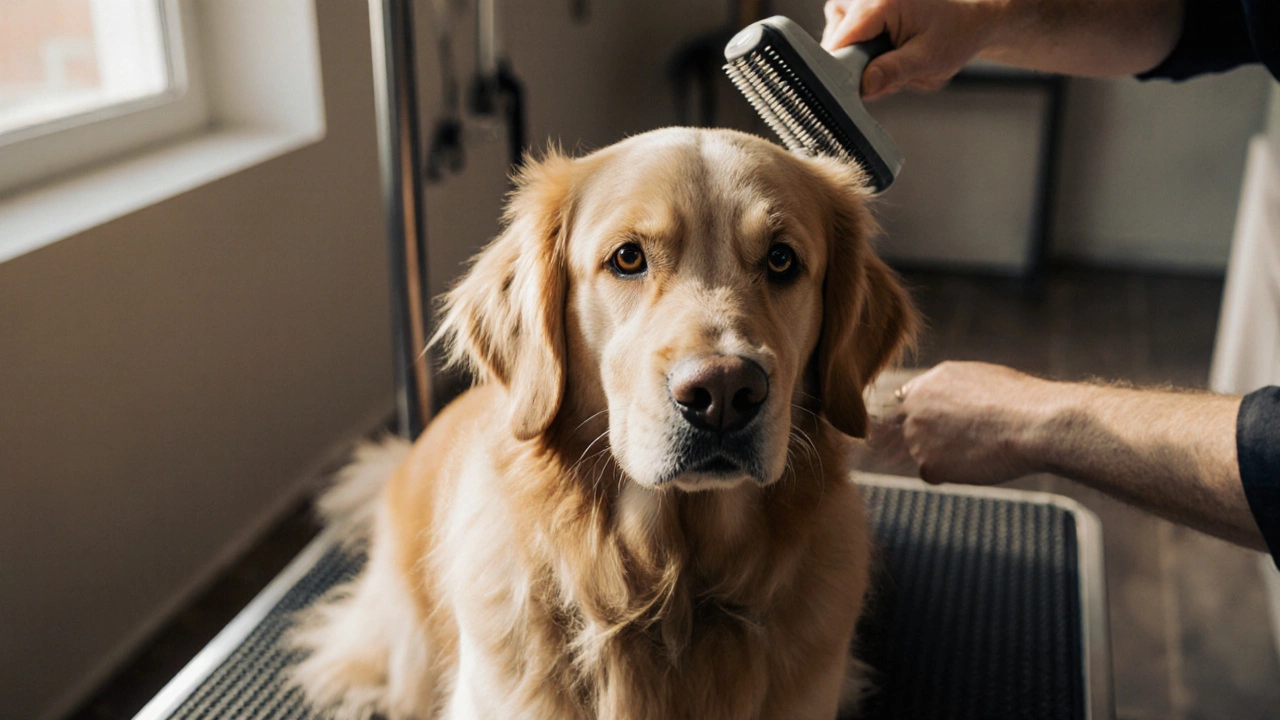Dog Grooming Anxiety: Understanding & Easing Your Pet’s Stress
When dealing with dog grooming anxiety, the fear or stress a dog shows during brushing, bathing or nail trimming. Also called canine grooming fear, it often overlaps with broader canine anxiety, a state of heightened nervousness triggered by sounds, smells or handling. The condition usually involves a blend of sensory overload, previous bad experiences, and a lack of gradual exposure. To tackle it you’ll need the right grooming tools, brushes, clippers and shampoos designed for comfort and effective calming aids, such as pheromone diffusers, anxiety wraps or natural supplements. Together they form a practical toolkit that reduces stress triggers and lets you build a positive grooming routine.
Why Dogs Get Stressed During Grooming
First, the physical sensations matter. Rough brushes or loud clippers can feel threatening, so a smooth‑bristled brush or a low‑noise clipper becomes a key attribute of successful grooming. Second, the environment plays a role; bright lights and echoing bathrooms can heighten a dog’s startle response. Third, timing is crucial—rushing through a session sends a signal that grooming equals danger, while a slow, calm approach signals safety. These three attributes—tool design, environment control, and pacing—create a semantic triple: dog grooming anxiety requires gentle tools, a calm setting, and patient handling. When any of these elements is missing, the anxiety spikes, leading to resistance, barking, or even aggression.
Behaviour training also ties in tightly. Desensitisation and counter‑conditioning are proven methods that reshape how a dog perceives grooming. For example, pairing a soft brush stroke with a favorite treat turns the brush into a cue for reward, shifting the emotional association from fear to pleasure. This technique illustrates another semantic relationship: effective calming aids influence the success of behaviour training. By layering treats, praise, and low‑level exposure, you create a positive feedback loop that gradually erodes the fear response.
What you’ll find next is a curated selection of articles that dive deeper into each of these areas. From science‑backed reviews of vibrating collars and their impact on anxiety, to step‑by‑step DIY training guides, the posts below give you actionable tips, product recommendations and real‑world examples. Whether you’re looking for the perfect brush, a safe calming supplement, or a training plan to turn grooming into a bonding activity, the collection is built to help you move from stressed sessions to relaxed routines.
Posted By Bryndle Redding On 24 Oct 2025 Comments (0)
Do Dogs Cry During Grooming? Understanding Signs & Reducing Stress
Discover why dogs may whine or seem to cry during grooming, how to spot real distress, and practical tips to keep grooming calm and stress‑free.
READ MORE